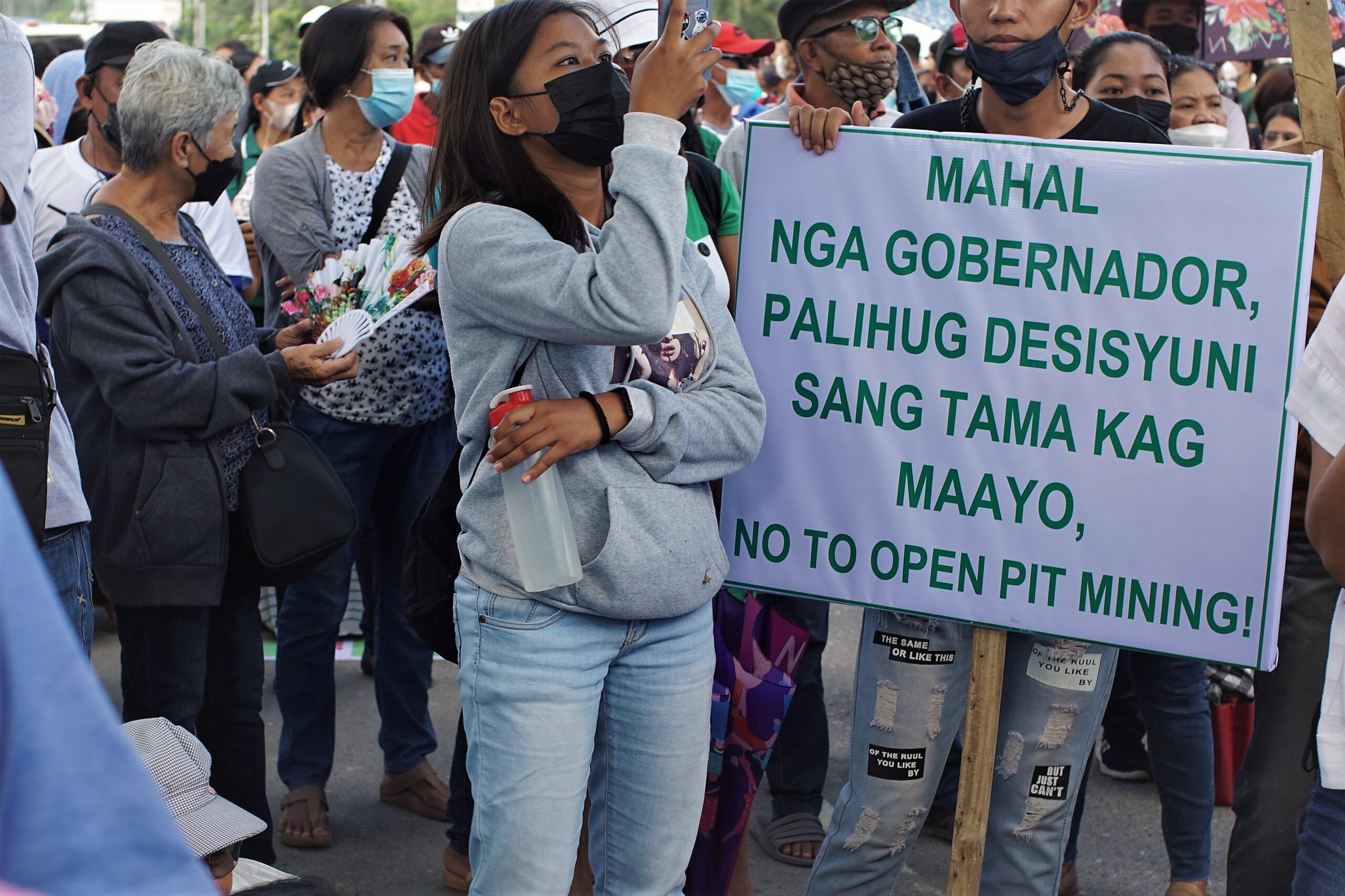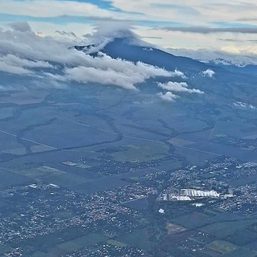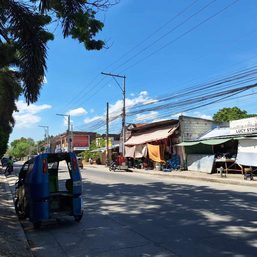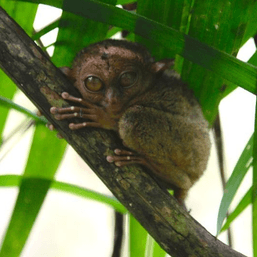SUMMARY
This is AI generated summarization, which may have errors. For context, always refer to the full article.

First of 2 Parts
CAGAYAN DE ORO, Philippines – Large-scale miners have shown renewed interest in going full blast in their operations during the first few months of the Marcos administration. Across Mindanao, they have asked local governments to ease restrictions and allow explorations and mineral extractions on a massive scale.
But environmental activists, including Catholic church leaders in Mindanao, are up in arms about the likelihood of local governments consenting to the large-scale mining operations.
The mining companies are having a heyday because they see the new Marcos administration as mining-friendly, an industry insider told Rappler.
In the Soccsksargen region, a mining giant, Sagittarius Mines Incorporated (SMI), plans to pursue its stalled project in Tampakan, which is said to have the largest untapped copper and gold deposits in Southeast Asia.
SMI’s board of directors is chaired by former defense secretary Gilbert Teodoro, a 2010 presidential candidate. Teodoro ran for senator in May under the Uniteam ticket of President Ferdinand Marcos Jr. and Vice President Sara Duterte.
Tampakan town is home to five watersheds, 4,000 hectares of old virgin forests, and at least five B’laan ancestral domain areas with rich fauna that include endangered species such as the Philippine tarsier.
Tampakan project
SMI, a joint venture of the Anglo-Swiss trading and mining giant Glencore, Australia’s Indophil Resources, and Filipino-owned Tampakan Group of Companies, is developing the $5.9-billion Tampakan project to extract mineral deposits within the ancestral domain through a 25-year Financial Technical Assistance Agreement (FTAA), which was supposed to have expired on March 21, 2020.
The FTAA was first granted to the Australian-owned Western Mining Corporation (WMC) on March 22, 1995, and then acquired by other firms several times starting in 2001.
The FTAA was extended by then-environment secretary Ramon Paje on June 8, 2016, four years before it was set to expire, and three weeks before the start of the Duterte administration. The extension is good until March 21, 2032, but the government has given SMI the option to renew the FTAA for another 25 years after 2032 or until 2057.
The Tampakan project was stalled when the South Cotabato provincial board banned open-pit mining in the province through an ordinance in 2010. Subsequently, the late environment secretary Gina Lopez canceled the Tampakan project’s environment clearance certificate (ECC).
In 2021, however, then-president Rodrigo Duterte lifted the open-pit mining moratorium, and the South Cotabato provincial board rid the province of its 12-year-old ban on open-pit mining on May 16, 2022, just a week after the elections.
A firestorm and demonstrations sparked by the move, however, prompted South Cotabato Governor Reynaldo Tamayo Jr. to veto the amendment of the province’s environment code that would have allowed open-pit mining again.
Tamayo has been elected president of the League of Provinces of the Philippines (LPP), an influential organization of the country’s 81 governors.
On its website, SMI says, “If developed, the Tampakan Project has the potential to make a significant contribution to the economic prosperity of the Philippines and enable a better future for the people of southern Mindanao.”

Moves to revive the SMI project, however, are being greeted by protests led by South Cotabato’s Catholic clergy.
Marbel Bishop Cerilo Casicas deplored the Tampakan project and the open-pit mining method as something which even “God will not approve” because of how it would impact the environment.
Casicas said, “God created humans to protect the environment.”
San Miguel in South Cotabato
Aside from SMI, there is another mining company investing heavily in South Cotabato.
San Miguel Energy Corporation has reportedly started clearing operations on vast tracts of land in the province.
But unlike Teodoro’s firm, San Miguel is interested in coal mining in the Daguma mountain range that stretches to Sultan Kudarat, starting with nine hectares in the village of Ned in Lake Sebu town in South Cotabato.
Seigfred Flaviano, the head of South Cotabato’s Provincial Environment and Management Office (PEMO), confirmed that the company was in the clearing stage as of August.
Environmentalists said the problem is that the coal mining firm, a subsidiary of SMC Global Power Holdings Corporation, would use the open-pit mining method.
Billionaire and influential businessman Ramon Ang, the president of San Miguel Corporation (SMC), is also the head of SMC Global Power Holdings.
Environmentalists and the Marbel Catholic diocese have been strongly opposing the open-pit mining method, which South Cotabato’s 2010 environment code banned.
Marist Hope Center for Justice and Good Governance director Noel Ben has sounded alarm bells, saying San Miguel has been cutting trees in the tracts of land in preparation for its coal mining project.
The San Miguel group also bought companies that already have existing mining concessions in South Cotabato.
For instance, San Miguel acquired in 2010 the Daguma Agro Minerals Incorporated (DAMI), which was granted a coal development and production operating contract on November 19, 2002.
The DAMI contract with the Department of Energy (DoE) covers areas in South Cotabato and Sultan Kudarat.
San Miguel also acquired Bonanza Energy Resources Incorporated (BERI) and Sultan Mining and Energy Development Corporation (SMEDC), which have similar coal mining concessions in the province.
The three San Miguel-acquired companies have control over 17,000 hectares, which are projected to yield some 70 million metric tons of coal.
A 2012 DoE list of coal operating contract holders showed that one person served as DAMI, BERI, and SMEDC’s chairman and president: Mario K. Surio, a director at Ginebra San Miguel Incorporated – the hard liquor arm of Ang’s SMC.
An engineer like Ang, Surio is also a director at Eagle Cement Corporation, where Ang is chairman. (To be concluded: Part 2: Bullish miners seek local governments’ green light across Mindanao) – Rappler.com
Add a comment
How does this make you feel?




























There are no comments yet. Add your comment to start the conversation.